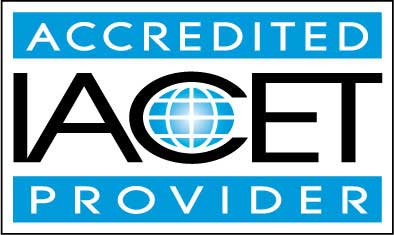Course Description
Excel 2019 is the latest iteration of the popular spreadsheet software developed by Microsoft. Excel allows users to create rich, stylized spreadsheets used for storing, organizing, sorting, calculating, and charting data. With Excel, you can create visually appealing content that represents your data. Before you start using Excel though, you should first learn what all the features Excel offers are and how to use them, so that your spreadsheets are built correctly the first time.
- Create spreadsheets
- Format cells, rows, columns, and entire worksheets so they fit and match your data
- Enter data into a spreadsheet
- Use formulas and functions for math, accounting, and totaling
- Create formulas and functions
- Calculate data
- Create charts and diagrams for your data
- Create data lists and forms
- Create and use pivot tables and pivot charts
- Work with Excel templates
- Share and protect your worksheets and workbooks
- Use What-If Analysis to determine possible outcomes
- And much more!
Nowadays, your Excel spreadsheet should include at least one chart, so we have step-by-step tutorials on charting, graphics, and using images. All these added components help make spreadsheets more visually appealing. We also review ways to use common functions as well as sort and filter data, so you can view large data sets in chronological, alphabetical or numerical order.
- Completely Online
- Self-Paced
- Printable Lessons
- Full HD Video

- 6 Months to Complete
- 24/7 Availability
- Start Anytime
- PC & Mac Compatible
- Android & iOS Friendly
- Accredited CEUs

Learning Outcomes
- Demonstrate the ability to create, save, and navigate an Excel spreadsheet, while utilizing basic features such as the Quick Access Toolbar and menu ribbon.
- Recognize and describe the basic components of Microsoft Excel's interface, including rows, columns, cells, and ribbon tabs.
- Define the difference between a worksheet and a workbook in Excel by providing examples of each.
- Demonstrate how to perform basic mathematical operations using Excel formulas, including referencing cells for dynamic calculations.
- Define the process of formatting numeric data in Excel by using specific number templates to control the display of decimals and currency symbols.
- Demonstrate how to apply various cell styles in Excel, including font changes, text alignment, and cell colorization, to enhance the spreadsheet's visual appeal.
- Recognize and apply Excel's protection features to restrict access, edit ranges, and safeguard workbook integrity, ensuring data security in collaborative environments.
- Define and demonstrate the process of referencing both internal worksheets and external workbooks in Excel by correctly applying the appropriate syntax.
- Demonstrate the ability to create and utilize Excel formulas using both relative and absolute cell references and properly manage order of operations using parentheses.
- Recognize and utilize the SUM, AVERAGE, and COUNT functions in Excel to perform data calculations within various ranges of cells.
- Analyze various financial outcomes using Excel's Scenario Manager by creating at least two different scenarios with provided data sets.
- Utilize Excel's Goal Seek function to determine necessary variable adjustments to achieve a specific financial target, such as desired monthly payments.
- Identify the steps required to insert an image from local storage or online into an Excel spreadsheet using the 'Insert' tab's 'Illustrations' menu.
- Demonstrate mastery of lesson content at levels of 70% or higher.
Assessment Guide
| Assessment | Points |
|---|---|
| Motives for Taking this Course | 2 points |
| Lesson 1 Quiz | 9 points |
| Lesson 2 Quiz | 9 points |
| Lesson 3 Quiz | 10 points |
| Lesson 4 Activity | 1 points |
| Lesson 4 Quiz | 10 points |
| Lesson 5 Activity | 1 points |
| Lesson 5 Quiz | 10 points |
| Lesson 6 Activity | 1 points |
| Lesson 6 Quiz | 10 points |
| Lesson 7 Quiz | 10 points |
| Lesson 8 Activity | 1 points |
| Lesson 8 Quiz | 10 points |
| Lesson 9 Quiz | 10 points |
| Lesson 10 Activity | 1 points |
| Lesson 10 Quiz | 10 points |
| Lesson 11 Activity | 1 points |
| Lesson 11 Quiz | 10 points |
| Lesson 12 Quiz | 9 points |
| Lesson 13 Quiz | 10 points |
| Lesson 14 Quiz | 10 points |
| Lesson 15 Quiz | 9 points |
| The Final Exam | 70 points |


